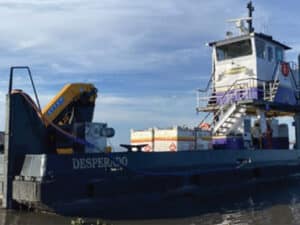
GTMaritime explores LEO opportunities and challenges
Written by Nick Blenkey
New GTMaritime white paper takes a balanced look at LEO options
With more Low Earth Orbit (LEO) satellite networks becoming operational, the technology is widely seen as a potential maritime satcoms game changer.
“The introduction of LEO networks is a massive step forward for maritime communications and connectivity,” says Richard White, global commercial director at GTMaritime. “The expectations are understandably high, as is the interest around how the addition of these constellations could transform maritime communications for the better. However, it’s important to recognize that LEO networks on their own would struggle to sustain the communication demands of modern shipping and that a more realistic approach focusing on integration with current infrastructure and solutions is required.”
U.K. headquartered GT Maritime, a specialist in secure maritime data communications via satellite, has just released a new white paper that assesses the impact Low Earth Orbit (LEO) networks are having on the maritime industry and key considerations for wider adoption.
Called “Opportunities and Challenges: Introducing New LEO Networks to the Maritime Industry,” the white paper offers an overview of commercial shipping’s first movers in LEO network service use. It outlines the potential for positive impact of LEO network bandwidth on vessel operations and describes a “quantum leap for crew connectivity possibilities”.
However, it also explores the challenges of integrating LEO network services that do not offer global coverage into shipping’s existing global connectivity infrastructure. In a tightly regulated industry, it also gives due consideration to the fact that existing networks support mandatory GMDSS connectivity.
Key sections of the new white paper consider the connectivity and cyber security imperatives, if LEO networks are to be integrated with existing solutions. It highlights how vessels must have systems in place to prevent disruption when switching between satellites or providers. The paper concludes with specific questions that need answering when considering the use of LEO networks and offers guidance on issues including the risks of bandwidth reduction and the benefits of data compression.
“Our new white paper offers insights into the challenges and opportunities faced by owners and operators as they assess whether and how to use LEO networks as part of their ship-to-shore connectivity,” says White. “To help them in their considerations, it provides straightforward guidance on the critical issues affecting ship operations, crew connectivity and systems interoperability.”




